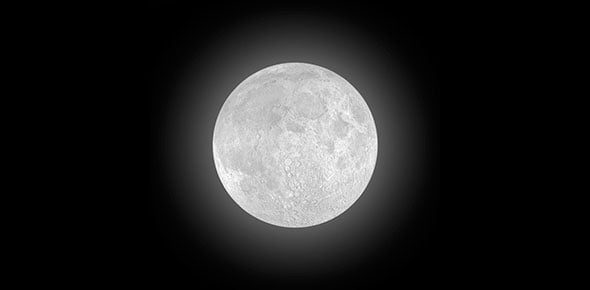Moon Physical Characteristics Quiz

It is about the moon. It is a class quiz.
- 1.
What makes maria so smooth?
- A.
Because of craters
- B.
They were once liquid
- C.
Gravity
- D.
Sun
Correct Answer
B. They were once liquidExplanation
Maria, which are large dark areas on the Moon's surface, are smooth because they were once liquid. These areas were formed by volcanic activity in the past, where molten lava flowed and covered the surface. As the lava cooled and solidified, it created a smooth and flat terrain. Therefore, the smoothness of Maria can be attributed to their previous liquid state.Rate this question:
-
- 2.
The Moon is the densest moon in the solar system
- A.
True
- B.
False
Correct Answer
B. FalseExplanation
Io is the densestRate this question:
-
- 3.
The diameter is about what fraction of the earth?
- A.
1/81
- B.
Double the earth
- C.
1/2
- D.
1/4
Correct Answer
D. 1/4Explanation
The correct answer is 1/4 because the diameter of the earth is approximately four times smaller than the earth's circumference. Since the circumference is the distance around a circle and the diameter is the distance across the circle, the diameter is one-fourth the size of the circumference.Rate this question:
-
- 4.
Some parts of the moon never receive sunlight
- A.
True
- B.
False
Correct Answer
A. TrueExplanation
Some parts of the moon never receive sunlight because of a phenomenon called lunar polar night. The moon's axis is tilted in such a way that certain areas near the poles are in constant darkness. These regions are permanently shadowed and do not receive any direct sunlight. This is due to the moon's slow rotation and the fact that its orbit is slightly tilted relative to the Earth's orbit around the sun. As a result, these areas remain extremely cold and have never been exposed to sunlight.Rate this question:
-
- 5.
The terrae (highlands) are mainly composed of
- A.
Ice
- B.
Basalt
- C.
Anorthosite
- D.
Nickel
Correct Answer
C. AnorthositeExplanation
The terrae (highlands) on the Moon are mainly composed of anorthosite. Anorthosite is a type of igneous rock that is predominantly made up of plagioclase feldspar. It is light in color and has a coarse-grained texture. Anorthosite is believed to have formed from the solidification of molten rock on the Moon's surface billions of years ago. The presence of anorthosite in the terrae suggests that these areas experienced intense volcanic activity in the past, leading to the formation of this specific type of rock.Rate this question:
-
- 6.
Moon and Mercury are both geologically dead
- A.
True
- B.
False
Correct Answer
A. TrueExplanation
Moon and Mercury are both geologically dead because they lack active tectonic plates, volcanic activity, and significant erosion. The Moon's surface is covered in impact craters that have remained unchanged for billions of years, indicating a lack of geological activity. Similarly, Mercury's surface also shows evidence of ancient volcanic activity and impact craters that have not been eroded or modified. Therefore, both celestial bodies are considered geologically dead as there is no ongoing geological processes occurring on their surfaces.Rate this question:
-
- 7.
What covers the lunar surface?
- A.
Lunar Regolith
- B.
Lava tubes
- C.
Gas
- D.
Mantle
Correct Answer
A. Lunar RegolithExplanation
Lunar regolith refers to the layer of loose, fragmented material that covers the solid bedrock on the surface of the moon. It is composed of various materials, including small rocks, dust, and soil. This layer is formed by the impact of meteoroids on the lunar surface over millions of years. The regolith is several meters thick in some areas and serves as a protective layer against space radiation and micrometeorite impacts. It also contains valuable resources such as oxygen and water that could potentially be utilized for future lunar exploration and colonization.Rate this question:
-
- 8.
An increase in the size and number of craters means the planet would...
- A.
Mean the planet is older
- B.
Mean the planet is younger
- C.
Mean the planet has no atmosphere
- D.
Mean it is a dwarf planet
Correct Answer
A. Mean the planet is olderExplanation
An increase in the size and number of craters on a planet indicates that it has been subjected to more impacts from meteoroids and other celestial bodies over time. This suggests that the planet has had a longer period of time for these impacts to occur, making it older.Rate this question:
-
- 9.
Which are older, the maria or the terrae?
- A.
Maria
- B.
Terrae
Correct Answer
B. TerraeExplanation
Terrae is the correct answer because it refers to the highlands on the Moon's surface, which are believed to be older than the maria. The maria, on the other hand, are large dark plains formed by ancient volcanic eruptions and are considered to be relatively younger geological features. Therefore, the terrae are older than the maria.Rate this question:
-
- 10.
Which area is more heavily cratered?
- A.
North Pole
- B.
South Pole
Correct Answer
B. South PoleExplanation
The South Pole is more heavily cratered because it is located in the southern hemisphere of the Moon, which is closer to the Earth. This means that it is exposed to more impacts from asteroids and meteoroids due to its proximity to the main asteroid belt between Mars and Jupiter. Additionally, the South Pole has a higher elevation compared to the North Pole, which increases the likelihood of impacts as it provides a larger target area for incoming objects.Rate this question:
-
Quiz Review Timeline +
Our quizzes are rigorously reviewed, monitored and continuously updated by our expert board to maintain accuracy, relevance, and timeliness.
-
Current Version
-
Mar 22, 2023Quiz Edited by
ProProfs Editorial Team -
Oct 21, 2009Quiz Created by
Mtb2434
 Back to top
Back to top


